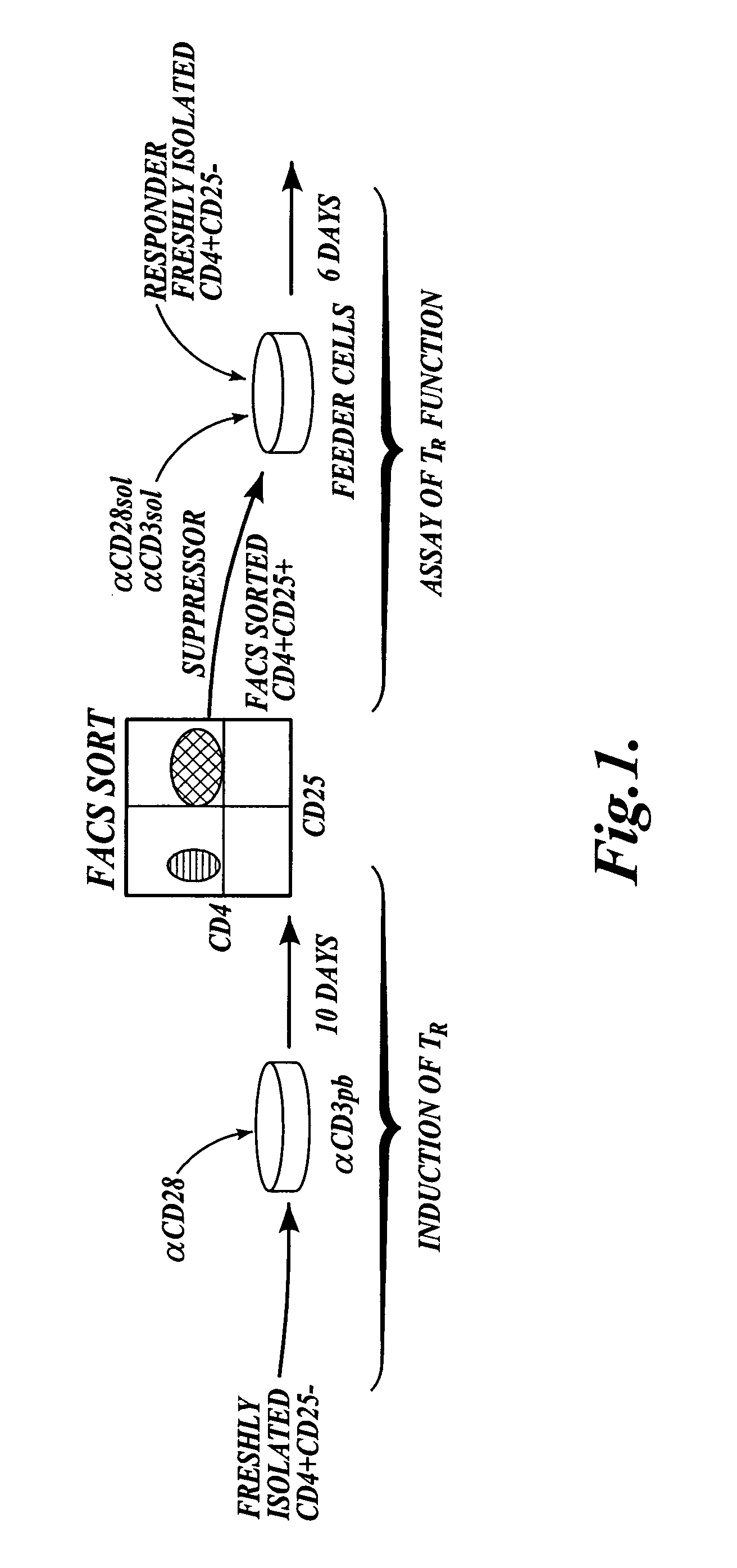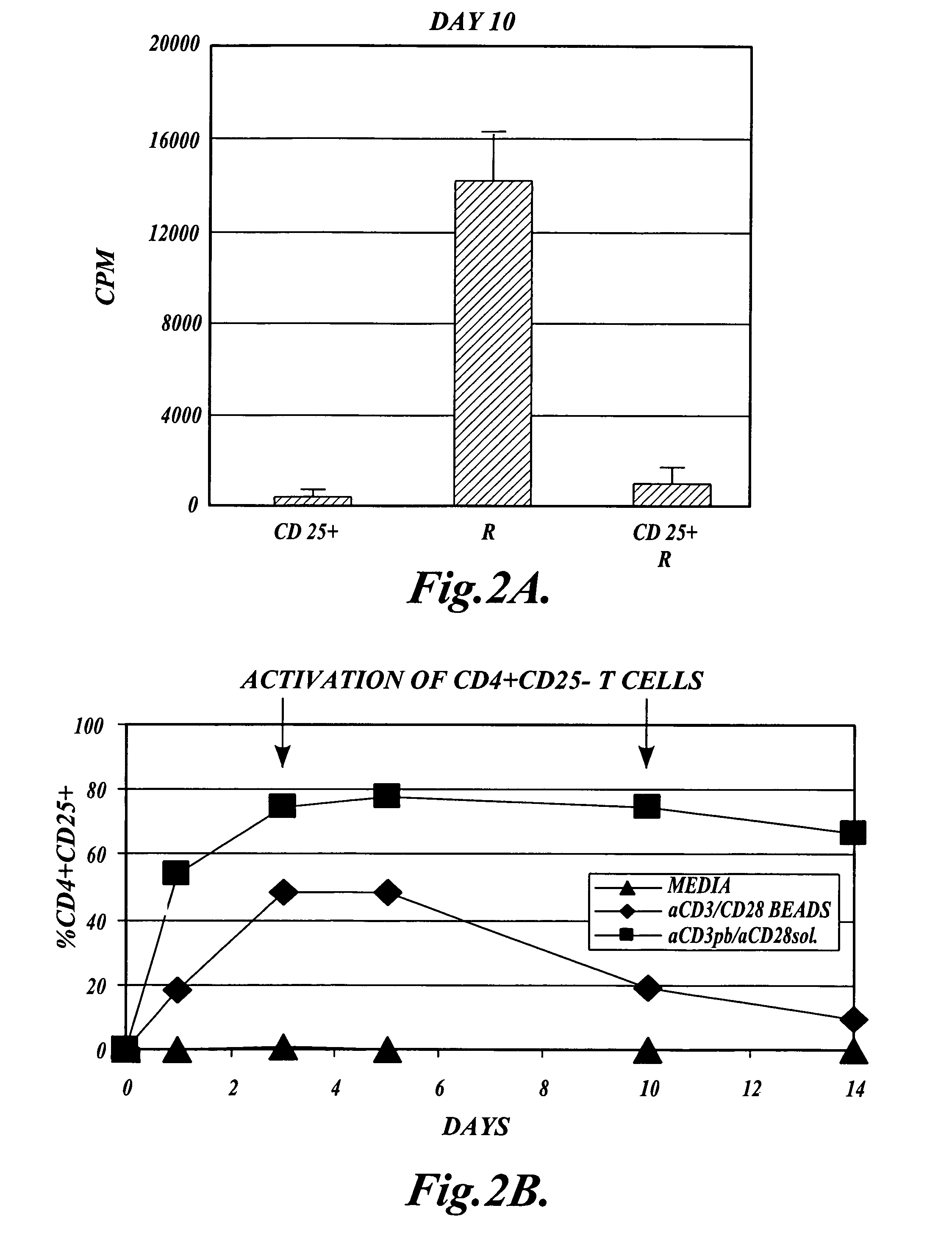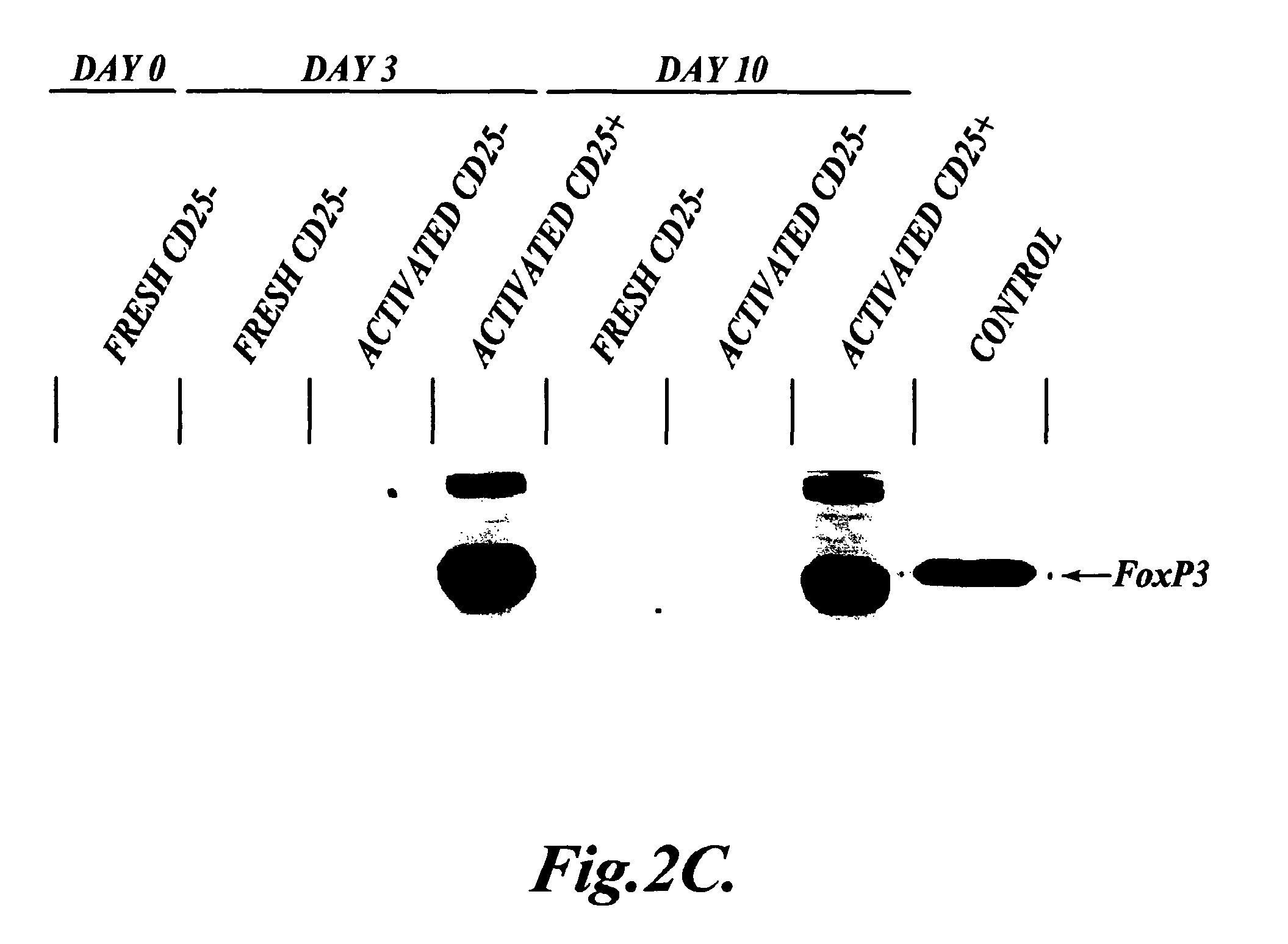Methods of generating antigen-specific CD4+CD25+regulatory T cells, compositions and methods of use
a technology of cd4+cd25+regulatory t cells and generating methods, applied in the field of new antigen-specific regulatory t cells, can solve the problems of incomplete central tolerance, difficult isolation and expansion of freshly isolated human cd4+cd25+ t cells with suppressive function, and difficulty in further immune regulation. to achieve the effect of reducing the risk and/or the severity of an adverse immune respons
- Summary
- Abstract
- Description
- Claims
- Application Information
AI Technical Summary
Benefits of technology
Problems solved by technology
Method used
Image
Examples
example 1
[0116]This example describes a method of generating CD4+CD25+ T regulatory cells from peripheral CD4+ cells with the inducing agents anti-CD3 / anti-CD28. The diagram shown in FIG. 1 illustrates the steps included in the method described in this example.
Isolation of CD4+CD25− T Cells from PBMC:
[0117]To isolate CD4+CD25− T cells, human peripheral blood was obtained from normal healthy donors, and peripheral blood mononuclear cells “PBMCS” were prepared as described in Walker et al., J. Clin. Invest., 112:1437-1443, 2003. Briefly, the PBMCs were isolated by centrifugation over Ficoll-Hypaque gradients. CD4+ T cells were purified by depletion of cells expressing CD8, CD11b, CD16, CD19, CD36, and CD56 with the CD4+ No-touch T cell isolation kit (Miltenyi Biotec, Auburn, Calif.). CD4+CD25− cells were isolated by negative selection with CD25 microbeads (Miltenyi Biotec, Auburn, Calif.). Purity was determined to be greater than 99% CD25− by FACS analysis (data not shown).
[0118]In order to ru...
example 2
[0134]This example demonstrates that CD4+CD25+ Regulatory T cells can be generated from cell populations enriched for memory cells and naïve cells derived from peripheral CD4+ T cells.
Preparation of Cell Populations Enriched for Naïve and Memory Peripheral T Cells:
[0135]CD4+ T cells from peripheral blood were obtained as described in Example 1. The memory T cell population having the markers CD4+CD25−CD45RA−CD45RO+ was sorted by FACS into a memory cell enriched pool and the naïve T cell population having the markers CD4+CD25−CD45RA+CD45RO− was sorted by FACS into a naïve cell enriched pool.
Generation of CD4+CD25+ Regulatory T Cells:
[0136]The memory T cell pool and the naïve T cell pool were each induced with plate-bound anti-CD3 and soluble anti-CD28 for 10 days as described in Example 1. After 10 days in culture, the cells were stained with antibodies to CD4 and CD25 and FACS sorted into CD25+ and CD25− subgroups.
[0137]Functional Assays: After 10 days in culture, the cells in each ...
example 3
[0139]This example demonstrates that allo-reactive CD4+CD25+ regulatory T cells are induced by culturing with allogeneic dendritic cells.
Derivation and Culture of Mature Dendritic Cells:
[0140]PBMC were prepared by centrifugation over Ficoll-Hypaque gradients as described in Example 1. Cells were plated for adherence for 2 hours and then washed of nonadherent cells. Cells were then cultured with 1000 U / ml GM-CSF and 50 ng / ml IL-4 (R&D systems). After 6-9 days, 2 ng / ml IL-1β (R&D systems) and 1 μg / ml PGE2 (Calbiochem), TNFalpha, and IL-6 were added to the culture for 2-3 days. Mature dendritic cells were then harvested, irradiated (5000 rads) and used to stimulate CD4+CD25− T cells in the assay described below.
Generation of CD4+CD25+ Regulatory T Cells:
[0141]CD4+CD25− cells were isolated from PBMC as in Example 1. The CD4+CD25− cells were placed in culture and induced with allogeneic dendritic cells using a 1:50 ratio of CD25− T cells to allogeneic dendritic cells. After 10 days in cu...
PUM
| Property | Measurement | Unit |
|---|---|---|
| time | aaaaa | aaaaa |
| time period | aaaaa | aaaaa |
| concentration | aaaaa | aaaaa |
Abstract
Description
Claims
Application Information
 Login to View More
Login to View More - R&D
- Intellectual Property
- Life Sciences
- Materials
- Tech Scout
- Unparalleled Data Quality
- Higher Quality Content
- 60% Fewer Hallucinations
Browse by: Latest US Patents, China's latest patents, Technical Efficacy Thesaurus, Application Domain, Technology Topic, Popular Technical Reports.
© 2025 PatSnap. All rights reserved.Legal|Privacy policy|Modern Slavery Act Transparency Statement|Sitemap|About US| Contact US: help@patsnap.com



